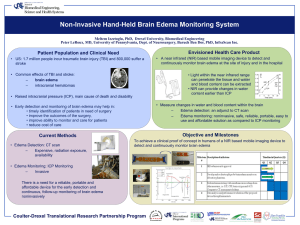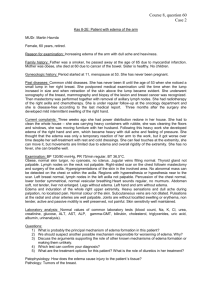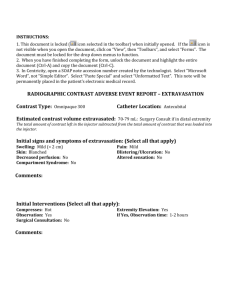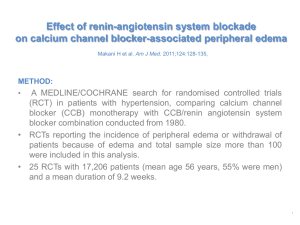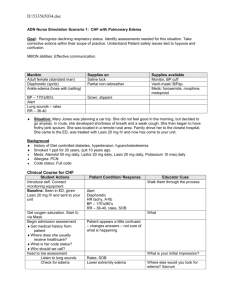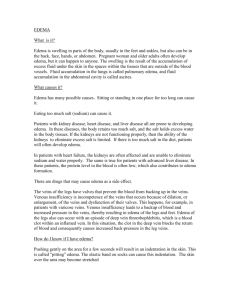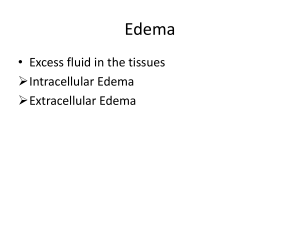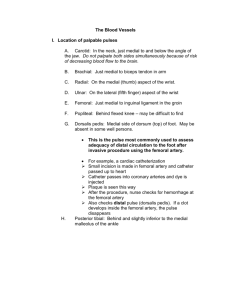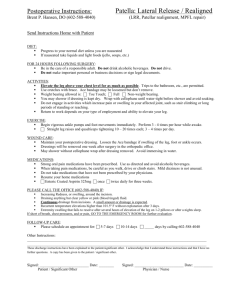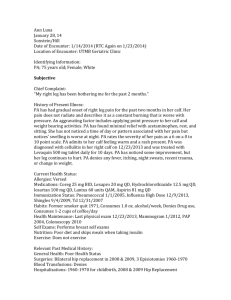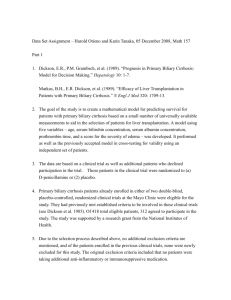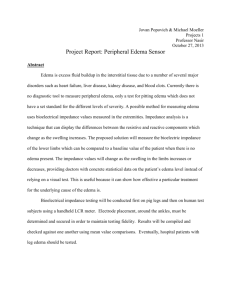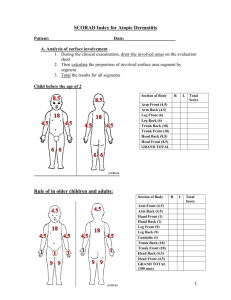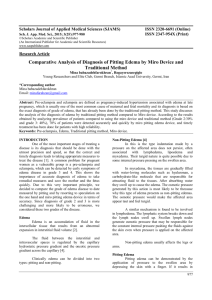Tbilisi State University, Faculty of Medicine Course: Case Based
advertisement
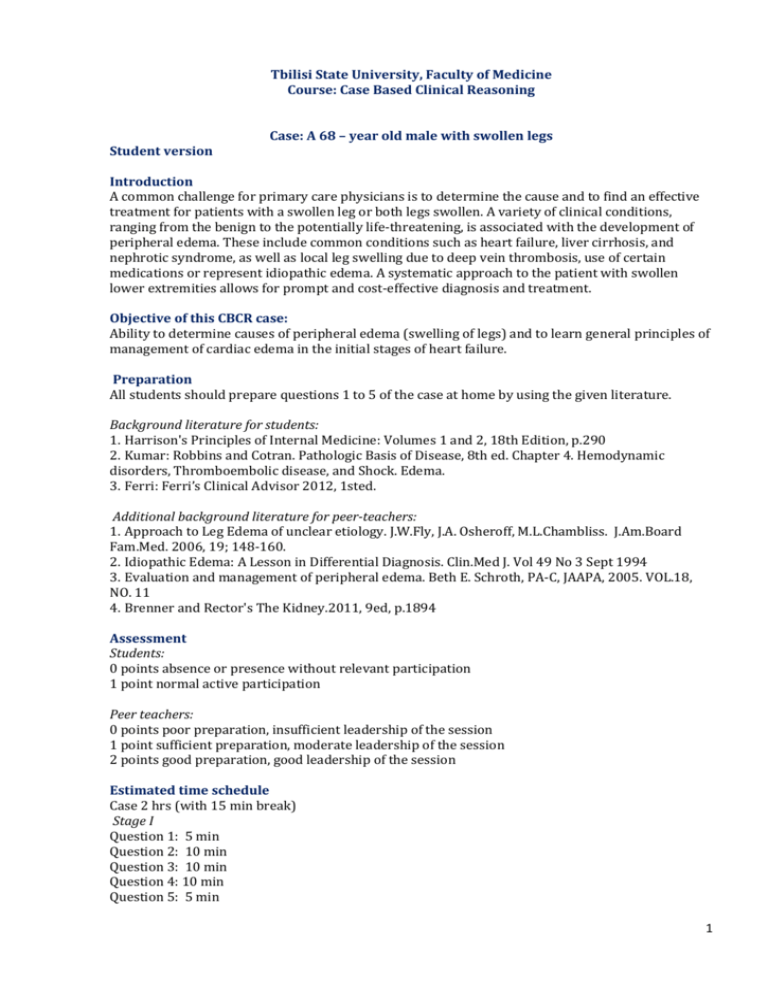
Tbilisi State University, Faculty of Medicine Course: Case Based Clinical Reasoning Case: A 68 – year old male with swollen legs Student version Introduction A common challenge for primary care physicians is to determine the cause and to find an effective treatment for patients with a swollen leg or both legs swollen. A variety of clinical conditions, ranging from the benign to the potentially life-threatening, is associated with the development of peripheral edema. These include common conditions such as heart failure, liver cirrhosis, and nephrotic syndrome, as well as local leg swelling due to deep vein thrombosis, use of certain medications or represent idiopathic edema. A systematic approach to the patient with swollen lower extremities allows for prompt and cost-effective diagnosis and treatment. Objective of this CBCR case: Ability to determine causes of peripheral edema (swelling of legs) and to learn general principles of management of cardiac edema in the initial stages of heart failure. Preparation All students should prepare questions 1 to 5 of the case at home by using the given literature. Background literature for students: 1. Harrison's Principles of Internal Medicine: Volumes 1 and 2, 18th Edition, p.290 2. Kumar: Robbins and Cotran. Pathologic Basis of Disease, 8th ed. Chapter 4. Hemodynamic disorders, Thromboembolic disease, and Shock. Edema. 3. Ferri: Ferri’s Clinical Advisor 2012, 1sted. Additional background literature for peer-teachers: 1. Approach to Leg Edema of unclear etiology. J.W.Fly, J.A. Osheroff, M.L.Chambliss. J.Am.Board Fam.Med. 2006, 19; 148-160. 2. Idiopathic Edema: A Lesson in Differential Diagnosis. Clin.Med J. Vol 49 No 3 Sept 1994 3. Evaluation and management of peripheral edema. Beth E. Schroth, PA-C, JAAPA, 2005. VOL.18, NO. 11 4. Brenner and Rector's The Kidney.2011, 9ed, p.1894 Assessment Students: 0 points absence or presence without relevant participation 1 point normal active participation Peer teachers: 0 points poor preparation, insufficient leadership of the session 1 point sufficient preparation, moderate leadership of the session 2 points good preparation, good leadership of the session Estimated time schedule Case 2 hrs (with 15 min break) Stage I Question 1: 5 min Question 2: 10 min Question 3: 10 min Question 4: 10 min Question 5: 5 min 1 Stage II Hand-out 1 Question 6: 10 min Question 7: 5 min Question 8: 10 min Mini-lecture: 10 min Stage III Hand-out 2 Question 9: 10 min Question 10: 10 min Summary : 10 min Stage I – Presentation of the patient’s problem Case Mr. Nicholas Giorgadze, a 68-year old male, comes to your GP office with a 6 months history of progressive fatigue, dizziness and swelling of legs. During this period he noticed he has gained some weight. He also noticed gradually reduced urine volume and swelling of legs, mostly in the evening or after a prolonged sitting position. Mr Giorgadze is a writer and usually works with his PC until late in the evening but he never developed swollen legs before. Question 1. Based on the case presentation, what could be the cause of the swelling of the legs and are there any predisposing factors of peripheral edema? Question 2. Based on the history, what is the most likely problem of the patient? Question 3. Make an initial classification of possible causes of edema that can lead to leg swelling. Question 4. Discuss pathophysiological mechanisms of leg swelling formation, related to the possible causes listed above. Question 5. What additional history questions should you ask to proceed in identifying the cause of edema? Stage II - Results of history taking Hand-out 1 (shown on the screen and read out loud) Question 6. What diagnoses are most likely now? Question 7 Which components of the physical examination should you perform? How can these examinations help to distinguish between different conditions leading to edema of the legs? Question 8. What diagnostic tests should you perform? Try to list tests that could reveal a specific disease related to peripheral edema Stage III - Results of physical examination and diagnostic tests Hand-out 2 (shown on the screen and read out loud) 2 Question 9. What do the results of the physical examination, laboratory and diagnostic tests show? What is your diagnosis now? Question 10. What is the treatment and prognosis for this patient? After Question 10 one of the students from the group summarizes the whole case chronologically in a few minutes 3
